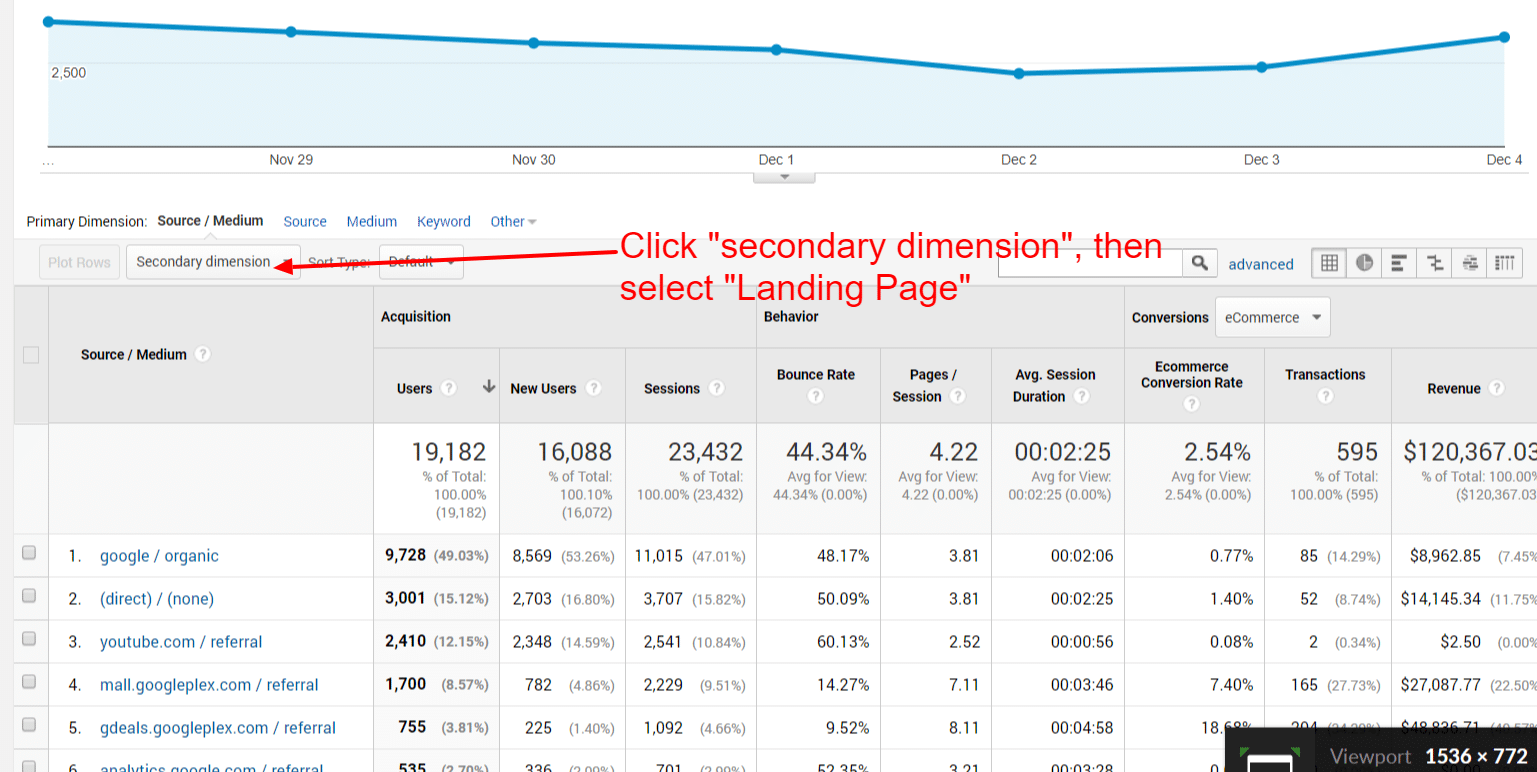Enhance Your Data Evaluation Making Use Of Second Measurement in Google Analytics
Checking out the abilities of additional measurements in Google Analytics opens a realm of possibilities for refining information evaluation. By layering additional measurements onto main information sets, an even more elaborate narrative arises, shedding light on individual interactions and performance indications.
Comprehending Secondary Measurements
Additional dimensions in Google Analytics refer to extra parameters that can be included to the key measurement, permitting for a more detailed analysis of information (Secondary Dimension in Google Analytics). By incorporating second dimensions, analysts can segment and filter data to uncover patterns, patterns, and relationships that could not be noticeable when looking at the information as a whole.

Benefits of Utilizing Additional Dimensions
When assessing data in Google Analytics, the utilization of second dimensions supplies vital insights right into user actions and performance metrics. By including a second measurement to your main data, you can delve deeper right into the characteristics of your web site site visitors and their interactions. One of the key advantages of utilizing second measurements is the capability to segment and compare information better. This segmentation allows you to recognize exactly how different variables, such as demographics or website traffic sources, effect user habits and conversions (Secondary Dimension in Google Analytics).
In addition, secondary dimensions boost the context of your primary data, providing an extra thorough sight of individual engagement and efficiency metrics. Generally, the use of secondary dimensions in Google Analytics can significantly boost the deepness and high quality of your data evaluation, leading to more educated decision-making and enhanced end results.
Just How to Include Additional Measurements
By including additional dimensions in Google Analytics, customers can get deeper understandings into their data evaluation procedure, permitting for even more thorough analysis of customer actions and efficiency metrics. Including secondary dimensions is a simple process that can dramatically enhance the depth of analysis. To include an additional dimension in Google Analytics, start by navigating to the record you intend to assess. As soon as in the record, locate the "Second measurement" tab over the information table. Click it to expose a dropdown food selection with different choices such as Actions, Innovation, and Personalized Capacities. Select the measurement you intend to add, such as 'Source/Medium' or 'Tool Category'. This additional measurement will then be related to your existing data, providing added context and enabling a more thorough analysis of individual communications. By utilizing secondary measurements effectively, individuals can reveal important insights that might have otherwise been ignored, bring about informed decision-making and enhanced efficiency approaches.
Analyzing Information With Additional Dimensions
Utilizing second dimensions in data analysis supplies an extra comprehensive understanding of user behavior and efficiency metrics. By including a secondary dimension to your main information embeded in Google Analytics, you can delve much deeper into the qualities of your site visitors and their communications. Combining the key measurement of 'source/medium' with the additional dimension of 'landing page' can explanation reveal which certain web pages are bring in website traffic from different resources, assisting you optimize these web pages for much better interaction.

Basically, assessing data with secondary measurements empowers you to obtain important understandings into user habits, identify fads, and make notified choices to boost the performance of your digital homes.
Finest Practices for Secondary Measurements
In data analysis, incorporating additional measurements effectively can dramatically enhance the depth of insights stemmed from metrics and customer behavior patterns. When utilizing additional measurements in Google Analytics or any various right here other logical tool, it is crucial to stick to best techniques to ensure the precision and significance of the information evaluation.
One secret ideal practice is to thoroughly choose second measurements that match the primary measurement being evaluated. Choosing additional dimensions that provide added context or additional segmentation can provide a much more thorough understanding of the information. It is additionally necessary to prevent overcomplicating the evaluation by including as well lots of secondary measurements, which might lead to complication or dilution of insights.
In addition, it is suggested to experiment with various mixes of key and second dimensions to uncover new correlations and patterns. On a regular basis evaluating and improving the choice of secondary dimensions based on the details goals of the evaluation can lead to more workable understandings. By adhering to these best practices, data analysts can utilize secondary measurements effectively to boost the general information analysis process and decision-making abilities.

Final Thought
To conclude, including second dimensions in Google Analytics is essential for a thorough data analysis method. By leveraging additional measurements alongside key ones, marketers and analysts can uncover beneficial understandings and connections that can notify decision-making and enhance electronic advertising and marketing strategies. Recognizing just how to effectively use additional measurements and following ideal techniques will certainly enable professionals to extract significant information and improve their overall efficiency metrics.
Second measurements in Google Analytics refer to added criteria that can be included to the main dimension, enabling for a much more thorough analysis of data. By integrating secondary measurements, experts can sector and filter information to discover patterns, patterns, and connections that may not be obvious when looking at the information as a whole. Combining the primary dimension of 'source/medium' with the additional measurement of 'landing page' can directory reveal which specific pages are bring in traffic from various resources, assisting you maximize these web pages for better involvement.
One key ideal method is to very carefully select additional dimensions that complement the primary measurement being assessed. By adhering to these best practices, information analysts can leverage additional measurements properly to boost the total information evaluation process and decision-making capacities.